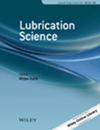Investigation on Air Drag Reduction and Stabilisation of Bionic Multiscale Wetting Gradient Surfaces
Abstract
Considering the rapid liquid transport characteristics of bionic dragonfly wings, an experimental investigation into the stability and drag reduction properties of an air film on various textured surfaces is being conducted. The study examines the impact of different wetting gradient textures on the stability and drag reduction properties of air film. Experimental results demonstrate an enhanced fluid transport efficiency, resulting in a maximum drag reduction of 9.1%, attributed to the size effect of the multi-scale structure of bionic dragonfly wings. Surfaces featuring wetting gradients exhibit increased stability of the air film within the texture and the ability to trap air bubbles. Based on a near-wall flow two-phase flow theory model, the simulation considers the morphological changes of the air film at structured interfaces and their influence on near-wall flow characteristics. The results indicate that the drag reduction effect arise from the slippage effect between the internal vortex in the air film inside the texture and the flow field near the wall surface. The synergistic effect of near-wall flow fields among multiple texture layers is evident. This interplay across different regions contributes to the sustained drag reduction within the near wall area.

 求助内容:
求助内容: 应助结果提醒方式:
应助结果提醒方式:


